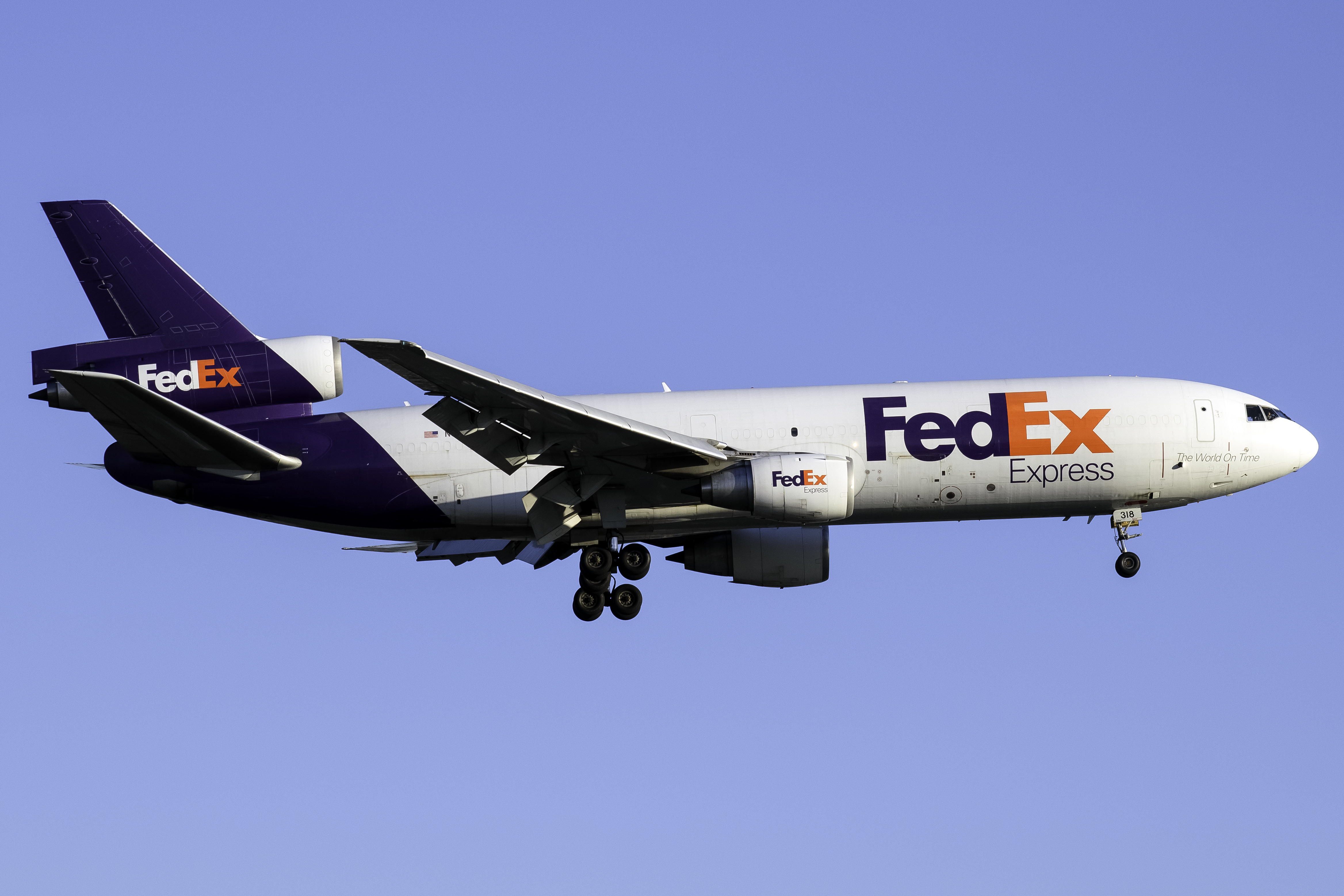The McDonnell Douglas DC-10—commonly referred to as the “Death Cruiser” or “Donald’s Disaster''—built up a horrific reputation throughout the 1970s. Today we’ll explore the reputation and history of this commonly misunderstood aircraft, and what led to its unearned reputation as the most dangerous airplane ever produced.
The year is 1970. Air travel is finally booming and Boeing has just released the Queen of The Skies, its pinnacle 747. The 747 was produced primarily to allow for easy long-haul operations, customer satisfaction, and lower prices on long-haul routes. What was once exclusively designed for the upper echelons of America's elite was now being transformed into commonplace for the average person.
With the release of the 747, McDonnell Douglas saw an opportunity in a market that had only been captivated by the 747. Beginning in the 1960s, McDonnell drew up the blueprints for its own version of the 747, creating the DC-10.
The DC-10 is commonly known as a “trijet”, referring to the aircraft’s two engines mounted on each wing, with the third engine mounted on top of the fuselage and in front of the stabilizer. On July 29, 1971, the aircraft received its type certificate from the FAA, and with that, was released into the unbounding skies.
Upon the aircraft’s release, flagship carriers such as American Airlines and United Airlines saw huge potential in the massive carrying capacity of the aircraft, in addition to its relatively low cost in comparison to Lockheed Martin's L-1011, which was in production at the same time. For the first year and a half, the airplane sailed the skies seamlessly. However, this came to a sharp end on June 12, 1972, when an American Airlines flight 96 lost its aft cargo door over Windsor, Ontario. This caused a sudden decompression of the cabin, causing part of the floor to collapse onto critical flight controls and hydraulic systems, damaging them severely.
Miraculously, the pilots made a safe emergency landing. Upon inspection, the NTSB realized that McDonnell Douglas had made a critical error when designing their baggage door. The door could be closed without the locking mechanism being fully engaged, and this wasn’t easy to visually inspect. However, the FAA never issued an emergency airworthiness directive for the design, and the airplane continued service with little modification to remedy the issue.

Tragically, the lack of action on behalf of McDonnell Douglas and the FAA culminated in the deadliest air crash in history (at the time) aboard Turkish Airlines flight 981, which encountered the same type of cargo-door blowout as American Airlines 96. This time, however, the cargo door blowout severed the flight controls to the fullest extent. This rendered the aircraft inoperable and led to the deaths of all 346 people on board.
After this accident, a special airworthiness bulletin was issued, and the problem never resurfaced in any major ways. Following this tragic accident, the media swung into full force demonizing the aircraft as a “death trap”, and the company suffered because of it.
However, even after the tragic accident of Turkish Airlines 981, America’s flagship carriers were still utilizing the inexpensive airplane as an easy solution to their long haul problems. While the reputation of the airplane had suffered some damage, most people understood that no company is perfect, and new aircraft designs are bound to have problems.
This consensus went out the window, however, when American Airlines flight 191 crashed shortly after departure from Chicago O’Hare (ORD) airport. The NTSB discovered that the left engine on the airplane had fully broken off immediately after takeoff. The engine then destroyed the leading edge slats of the left wing, and when combined with the asymmetric thrust caused by the destruction of the left engine, the aircraft was soon making a steep left bank at low altitude.
Just twelve days later on June 6, 1979, the FAA revoked the DC-10 type certificate, effectively ending McDonnell Douglas's reputation in the sky, although just five weeks later after some mandatory changes were made the aircraft hit the skies once more.
Upon further investigation of the crash, it was discovered that the cause of the accident had nothing to do with design flaws of the aircraft. The accident was traced back to a maintenance facility in Tulsa, Oklahoma, where the engine was improperly removed. Describing the incident the NTSB said, “Strut failure was determined to have been caused by unintended structural damage which occurred during engine/pylon reinstallation using a forklift...The NTSB concluded that the procedure had not been sufficiently evaluated, and appropriate consideration had not been given to the potential for inducing damage.”
Unfortunately, American Airlines had failed to follow McDonnell Douglas’s procedure that they set forth specifically to avoid tragedies like these, yet it was McDonnell Douglas who suffered.

By late 1979, the company’s reputation had suffered to its breaking point, and the media was having a frenzy following the first-ever grounding of a commercial airplane. Many mainline carriers were quietly forcing the DC-10 out of advertisements, and some even went as far as selling off their DC-10s entirely. The reputation had gotten so bad for the company that by 1988 production was stopped entirely, and a mere 386 airplanes were ever produced.
Even after production was halted in 1988, the DC-10 had made its mark on the world of aviation. Today, the aircraft is still in service through FedEx and other operators carrying freight across the world. As the DC-10’s future is finally dwindling into the limelight, it’s important to note that the aircraft’s safety record is on par with other aircraft of its time. While the DC-10 certainly came with a heavy dose of design flaws initially, the cargo door issue was resolved, and the aircraft suffered more from reputation damages than design flaws.
Comments (1)
 Lorna
I really enjoyed reading this article. Its a good and short one. As a DC10 fan i would've loved if the article would touch on more points of it but i guess that wasnt possible. I hope there will be more articles like that in the future about older planes of the golden time of aviation
Lorna
I really enjoyed reading this article. Its a good and short one. As a DC10 fan i would've loved if the article would touch on more points of it but i guess that wasnt possible. I hope there will be more articles like that in the future about older planes of the golden time of aviation
Add Your Comment
SHARE
TAGS
INFORMATIONAL DC-10 McDonnell Douglas DC-10RECENTLY PUBLISHED
 Learjet Owned By Vince Neil Crashes Into Gulfstream Jet, 1 Fatality Confirmed
On February 10th, around 14:30 local time, a Learjet private jet aircraft crashed into another private jet after landing at Scottsdale Airport (SCF) in Arizona.
NEWS
READ MORE »
Learjet Owned By Vince Neil Crashes Into Gulfstream Jet, 1 Fatality Confirmed
On February 10th, around 14:30 local time, a Learjet private jet aircraft crashed into another private jet after landing at Scottsdale Airport (SCF) in Arizona.
NEWS
READ MORE »
 Seattle Plane Strike 2025: Japan Airlines and Delta Collision Raises Safety Concerns
Seattle-Tacoma International Airport saw a concerning incident on Wednesday morning when a Japan Airlines (JAL) plane clipped a parked Delta Air Lines jet while taxiing. Thankfully, no one was injured, but passengers described the collision as a frightening experience.
NEWS
READ MORE »
Seattle Plane Strike 2025: Japan Airlines and Delta Collision Raises Safety Concerns
Seattle-Tacoma International Airport saw a concerning incident on Wednesday morning when a Japan Airlines (JAL) plane clipped a parked Delta Air Lines jet while taxiing. Thankfully, no one was injured, but passengers described the collision as a frightening experience.
NEWS
READ MORE »
 Ethiopian Airlines Expands Cargo Fleet with New Boeing 777 Freighter
Ethiopian Airlines has expanded its cargo fleet with a brand-new Boeing 777 Freighter, registered as ET-BAB (MSN 68140). The aircraft was delivered directly from Boeing’s factory in Everett, Washington, USA, and landed at Addis Ababa Bole International Airport at 3:41 PM (GMT+3) on Wednesday, January 22, 2025.
NEWS
READ MORE »
Ethiopian Airlines Expands Cargo Fleet with New Boeing 777 Freighter
Ethiopian Airlines has expanded its cargo fleet with a brand-new Boeing 777 Freighter, registered as ET-BAB (MSN 68140). The aircraft was delivered directly from Boeing’s factory in Everett, Washington, USA, and landed at Addis Ababa Bole International Airport at 3:41 PM (GMT+3) on Wednesday, January 22, 2025.
NEWS
READ MORE »





